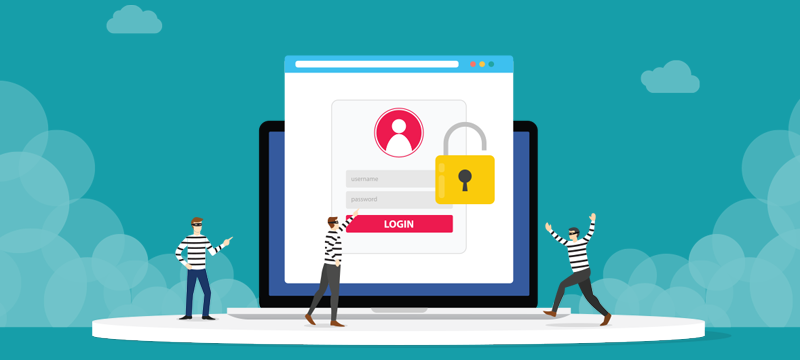The number of phishing attacks taking place in the cybersecurity domain has increased quite significantly over the past few years now. Website owners need to be well prepared to make sure that their websites don’t become a victim of phishing scam attacks. Thanks to a number of strong website vulnerability scanners available today, users can secure their websites from this phishing attack.
Phishing Attacks
A phishing attack starts with a fraud email that is intended to make the victim fall into the bait laid by the attackers. The message shared in the mail may look legit and as if it was issued from a trusted source. If the attacker manages to trap the victim, then he is forced to share his confidential information. In some cases, malware might also be installed on the systems of the victims
Phishing Attacks Types
- Deceptive Phishing Talking about phishing attacks, this is the most commonly used approach. Here, the attacker tries to gain confidential information from their victims. The attacker might use this information with the intent to create a monetary fraud or even serve it as the base for further attacks that might occur in the future.
- Spear Phishing These phishing attacks target individuals and not groups. The attacks gain information about their victims from their social media and other public platforms. This helps the attackers to customize their communications to make it look more authentic and genuine. Spear phishing attacks are often seen as the first step for the attackers to penetrate into the defense mechanism of the company and then carry out an attack.
- Whaling In a whaling attack, usually, top officials of business are targeted. The attackers spend a good amount of time performing research about their target and look to leverage it by ‘grabbing’ their login credentials. In a business, whaling continues to be a big concern as the top executives of the company hold access to much more crucial and sensitive information.
- Pharming Pharming attack is similar to phishing. Here, the victims are diverted to fraudulent links that might seem to be authentic. But, in this case, the users don’t need to click for getting diverted to a corrupt website. Attackers infect the user system and then redirect them to a corrupt & fake site, despite the user entering the correct website URL.
Protecting User Website
Considering phishing attacks, there are a number of ways that website owners can take for preventing phishing attacks on their websites. Also, there are a number of measures that the users need to take for minimizing the damage if their system has fallen into the trap laid by the attackers.
- Installing SSL Certificates Today it is becoming crucially important for all websites to have an SSL certificate installed on them, irrespective of their size. These SSL certificates assure the users that the websites they’re using remain original as well as authenticated. SSL-installed certificates have HTTPS placed before their URL, indicating that the website has added encryption to the data present on it. Talking about phishing attacks, installing SSL certificates is definitely the best choice. If the attacker looks to copy the website and trap the users, then the SSL certificate gives out a warning to the respective website owner that there has been an attempt to steal the website content and data. Most of the web hosting providers offer SSL certificates and their addition on the websites is not at all a tough task. The website owner just needs to ensure that they use the right type of SSL certificate is added to their website.
- Using Website Vulnerability Scanning Tools Website vulnerabilities are also increasing daily and every minute becomes a victim of one or the other form of a cyber attack. It is now becoming important for website owners to secure their websites at any cost. Website owners need to deploy vulnerability scanning tools that only secure their websites from phishing attacks but also other vulnerabilities and threats that have the ability to hinder the operation and performance of the websites. Whenever the website goes down due to a vulnerability or threat the volume of loss that the companies bear is huge coupled with downtime. No website owner will look to face downtimes because due to any cyberattack.
- Updating Passwords Regularly The best practice in the cybersecurity domain is that ideally, no one should have illegal access to the login credentials of the customers. In case of a breach, the user can modify their credentials as per their need. Most users deploy poor security policies when it is related to passwords. This is a clear indication that in case of events when a user loses his login credentials, attackers encash these. To avoid this, all the user needs to do is just keep on updating his passwords regularly. A password manager might be an effective tool if the user is not able to remember his login credentials.
- Setting Up a Two-Factor Authentication As a web hosting provider, bodHOST recommends its customers set up a Two-Factor Authentication (2FA) on all their online accounts. With 2FA, an additional security code is generated whenever the user logs in to their website with their respective credentials. These codes are generated on the go and are unique to every user account. Having 2FA helps users to safeguard their accounts from any unwanted phishing attack, despite having illegal access to the mail id and password. 2FA helps in providing enhanced mitigation in case of damage created due to phishing attacks.
Concluding Remarks
Hence, it is quite clear that phishing attacks can take place anytime if the user fails to have strong security mechanisms deployed. Users must be educated and trained enough so that they can avoid falling into the tricks laid out by the attackers. Deploying the above-discussed methods will definitely help the website owners to secure it and counter phishing attacks.
